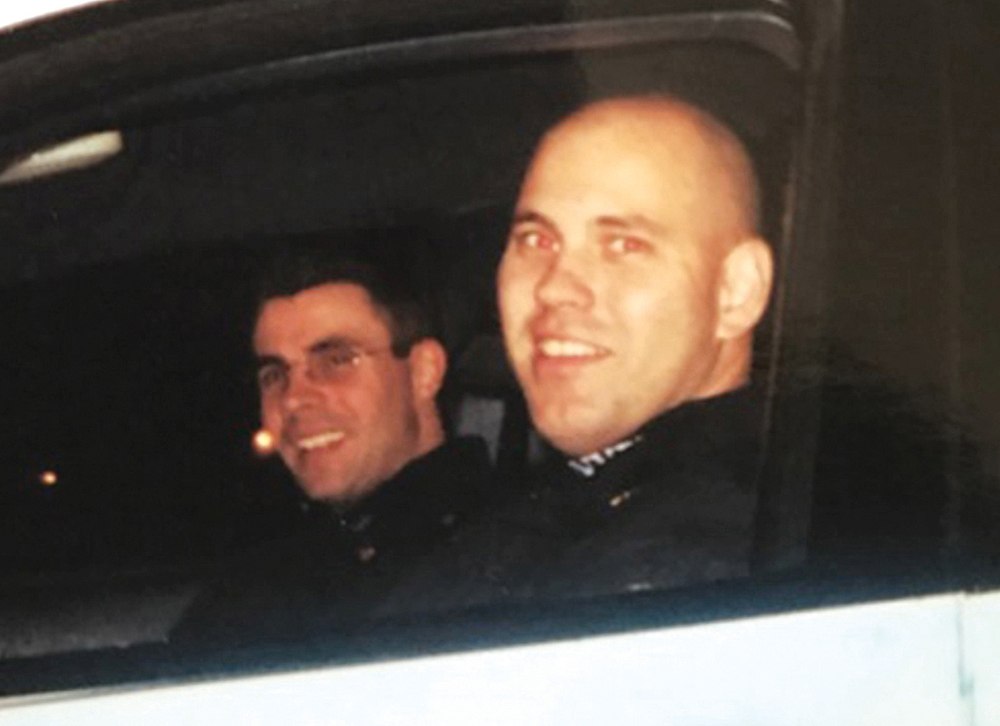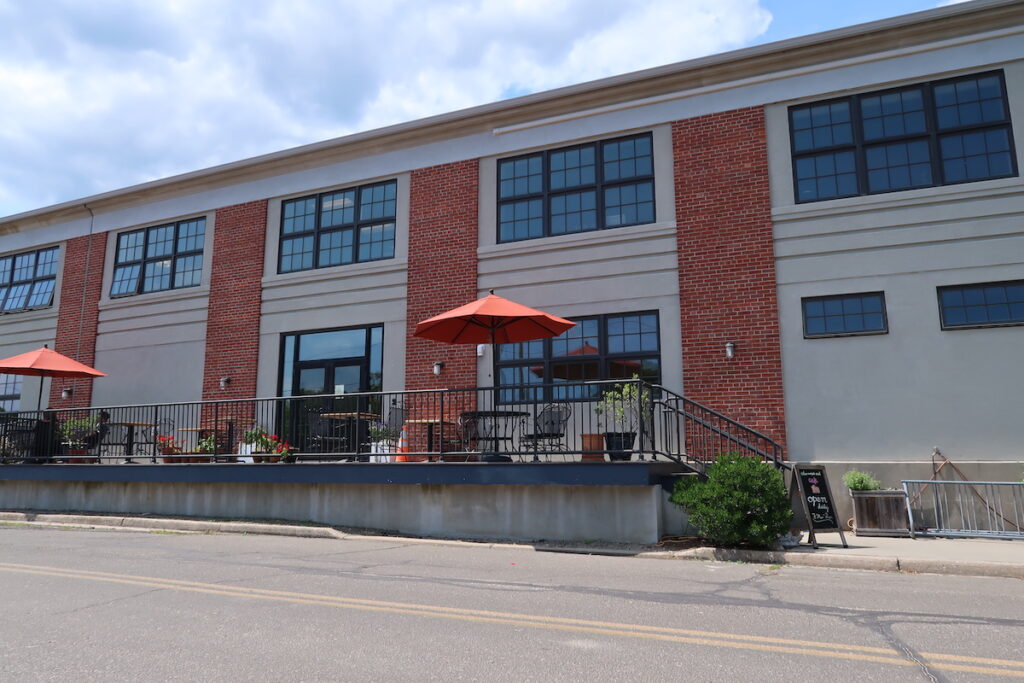Remembering 9/11: ‘At a loss for words’ at ground zero

He has many memories of those September days 20 years ago, but one is especially haunting. It’s of sounds he heard while searching for bodies on the massive hills of debris from the fallen towers at ground zero.
“On the pile, we’d hear sounds — something like smoke detector alarms — going off somewhere in the rubble,” Shelter Island Police Sgt. Terrence LeGrady said recently. He explained that firefighters have alarms on their oxygen tanks to alert them when the supply is running low.
“They were from the firefighters who had died, their bodies somewhere in the pile,” he said.
He paused, before adding, “So many of them.”
In 2001, Sgt. LeGrady was a New York City Police Department officer working out of the 102nd Precinct in Queens. On Sept. 10, he started an 11 p.m. to 7 a.m. shift. He wasn’t working with his partner, Brian Simonsen, on that shift. Mr. Simonsen, a Riverhead native, had been assigned to duty starting at 7 a.m. at a polling place in Queens for the Democratic primary.
It had been a relatively quiet night, Sgt. LeGrady remembered. When his shift was over on the bright, clear morning of the 11th, he took the Long Island Expressway to Coram, where he and his family were living at the time. “On the radio, the first reports were of a plane hitting one of the twin towers, but a small plane like a Cessna,” he said. “When I got home and turned on the TV, there was the second plane hitting.”
He got a call to return to the 102nd. “At one point all traffic heading west was closed,” he said. “I had to show my police department ID to get through.”

That was the start of nearly two weeks of practically non-stop duty. At times, he would go 40 hours without sleep, living on coffee and adrenaline.
Assigned to security duty at a Queens synagogue that morning, Sgt. LeGrady finally got back to the precinct later that day, with Mr. Simonsen arriving at around 9 p.m. He had been pulled off polling place duty when the election was canceled and had reported to ground zero.
“He was like everyone who went down there,” Sgt. LeGrady said. “At a loss for words over the enormity of it.”
The partners began a shift that night at 11 p.m. patrolling their precinct. Over the next several days, the partners, who were close friends, became even more solidly bound by their experiences, which included day after day at ground zero, for more than a week.
Mr. Simonsen, who went on to earn the rank of detective, was killed in the line of duty on Feb. 12, 2019. He was 42. “Our families were always together,” the sergeant said, in and out of each other’s homes, spending all holidays together. His wife, Laura, and his three sons referred to Mr. Simonsen as Uncle Brian. “He was the kindest, the sweetest man you’ll ever meet,” Sgt. LeGrady said. He noted that his friend’s nickname was “Smiles,” because “he lit up every room he ever entered.”
That first shift in the Queens neighborhood during the early hours of Sept. 13 revealed to the partners “something I’d never seen,” Sgt. LeGrady remembered. “Going for coffee at a Dunkin’ Donuts, people were insisting they would pay, and others were coming up to shake our hands or give us a hug,” he said. “On the street, people were cheering us, and all of the NYPD, and the fire department. There were people literally running after our patrol car, cheering.”
Soon the partners were assigned to one of the many bucket brigades at ground zero. They dug through rubble on the piles, the steep, unsteady hills of twisted steel beams, crushed offices and everything that went into two 110-story buildings, including the 2,606 human beings who worked there, and the 412 first responders who rushed to try and save them.
Sgt. LeGrady had to pause for a moment to describe the sensory and emotional overload ground zero produced. It takes time to describe what is, still in his memory, “overwhelming.” The dense smoke, the smells of incinerated rubber, steel and plastic “concocted this distinct odor,” he said. It was also extremely dangerous duty, with other nearby structures in danger of falling, and “there were still fires raging, and there were voids — it’s the only word I can use to describe them — all over the place. Really deep holes around you when you were on the pile, always shifting,” he said.
They were coached to respond to a set of whistles. “One whistle and everyone remained still, like statues, because the pile could be giving way under us or another building could fall. A second whistle, and you ran like hell because something was going on.”
All buildings nearby were windowless, the glass gone in the catastrophic collapses. Spray paint crudely drawn told rescue workers that buildings had been searched and cleared. One building had the spray-painted words: “Temporary morgue.”
As they worked, “there was always hope,” Sgt. LeGrady remembered. “There was an underground parking garage, with shops, and a kind of mall, and we thought people might be trapped there still alive. But, no.”
His memories include those piping sounds of oxygen tanks running low that firefighters who wore them would never hear. But just as unshakable are the memories of the cheers New Yorkers gave him and Mr. Simonsen in the immediate aftermath of the terrorist attacks, and how they wanted personally to make their respect for them known, and to thank the officers.
The career police officer has taken every Sept. 11 off since 2001 as a day of reflection. But this year, a fellow Shelter Island officer needs the day, so Sgt. LeGrady will be on the job.








